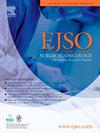Non-invasive classification of non-neoplastic and neoplastic gallbladder polyps based on clinical imaging and ultrasound radiomics features: An interpretable machine learning model
IF 3.5
2区 医学
Q2 ONCOLOGY
引用次数: 0
Abstract
Background
Gallbladder (GB) adenomas, precancerous lesions for gallbladder carcinoma (GBC), lack reliable non-invasive tools for preoperative differentiation of neoplastic polyps from cholesterol polyps. This study aimed to evaluate an interpretable machine learning (ML) combined model for the precise differentiation of the pathological nature of gallbladder polyps (GPs).
Methods
This study consecutively enrolled 744 patients from Xi'an Jiaotong University First Affiliated Hospital between January 2017 and December 2023 who were pathologically diagnosed postoperatively with cholesterol polyps, adenomas or T1-stage GBC. Radiomics features were extracted and selected, while clinical variables were subjected to univariate and multivariate logistic regression analyses to identify significant predictors of neoplastic polyps. A optimal ML-based radiomics model was developed, and separate clinical, US and combined models were constructed. Finally, SHapley Additive exPlanations (SHAP) was employed to visualize the classification process.
Results
The areas under the curves (AUCs) of the CatBoost-based radiomics model were 0.852 (95 % CI: 0.818–0.884) and 0.824 (95 % CI: 0.758–0.881) for the training and test sets, respectively. The combined model demonstrated the best performance with an improved AUC of 0.910 (95 % CI: 0.885–0.934) and 0.869 (95 % CI: 0.812–0.919), outperformed the clinical, radiomics, and US model (all P < 0.05), and reduced the rate of unnecessary cholecystectomies. SHAP analysis revealed that the polyp short diameter is a crucial independent risk factor in predicting the nature of the GPs.
Conclusion
The ML-based combined model may be an effective non-invasive tool for improving the precision treatment of GPs, utilizing SHAP to visualize the classification process can enhance its clinical application.
根据临床成像和超声放射组学特征对非肿瘤性和肿瘤性胆囊息肉进行无创分类:可解释的机器学习模型
本文章由计算机程序翻译,如有差异,请以英文原文为准。
求助全文
约1分钟内获得全文
求助全文
来源期刊

Ejso
医学-外科
CiteScore
6.40
自引率
2.60%
发文量
1148
审稿时长
41 days
期刊介绍:
JSO - European Journal of Surgical Oncology ("the Journal of Cancer Surgery") is the Official Journal of the European Society of Surgical Oncology and BASO ~ the Association for Cancer Surgery.
The EJSO aims to advance surgical oncology research and practice through the publication of original research articles, review articles, editorials, debates and correspondence.
 求助内容:
求助内容: 应助结果提醒方式:
应助结果提醒方式:


